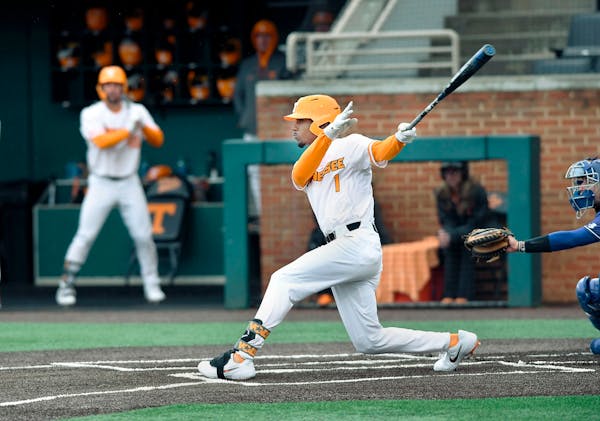The Twins have $4.58 million to spend on the four players they picked in this week's draft, enough to make them confident they will sign all four.
Now comes the hard part: Convincing disappointed ballplayers, unchosen in the draft's scant five rounds, to become Twins for a relative pittance.
"I'd be guessing if I said I knew how it will play out," Twins farm director Sean Johnson said. "But we are ready to put our best foot forward."
Just not their checkbook.
MLB teams can stock up their farm systems by signing as many amateur free agents as they'd like beginning Sunday morning. But there will be no bidding wars: Teams cannot offer more than $20,000 to any player.
By taking money out of the sales pitch, Johnson said, the Twins will have to find other ways to entice players to choose Minnesota over other suitors.
"At the heart of it, we want to show the player we want him in our system," Johnson said. But the real recruiting, which by MLB rule cannot begin until Sunday morning, will center on the investments the Twins have made in development: staff, expertise, equipment and facilities.
The Twins have also done their homework on potential signees, and plan to include those scouting reports, and their development plans, in their offer, Johnson said. " 'Here are the things we see with your swing, or your pitches, or your body, and [what] we can do to enhance you and optimize you to give you a chance to be a major league prospect,' " he explained. "Our player development has an incredible staff. They have a plentiful amount of tools to educate and show the player the path towards becoming a prospect."
When the Twins renovated their spring training site in 2014, they built a 58-room dormitory and academy for minor league players, an investment that Johnson expects to pay off during the free-agent scramble.
"Our academy is unmatched. It's an incredible place for players to be. We have players who want to be there year-round," Johnson said. "We think that's a huge separator for us. We're hoping that ends up getting us a few wins" in the signing wars.
But nobody is certain whether those incentives can overcome the lack of bonuses. The $20,000 limit represents a huge loss of incentive money for this year's middle class of would-be draftees, set adrift when the draft was slashed from 40 rounds to five.
MLB teams spent more than $61 million on players taken after the fifth round last season, according to Baseball America's tally, and more than 500 received bonuses larger than $20,000. The maximum bonus a team could offer a lower-round player in 2019 was $125,000.
Why would a player who was expecting a big-league jackpot accept that 84% cut? Well, many of the best of them won't; the same pandemic that caused MLB to eliminate 35 rounds of the draft also convinced the NCAA to grant seniors an extra year of eligibility if they choose to return to school, and several figure to do so in hopes of improving their draft standing for 2021.
Some players may be ready to turn professional anyway, especially college players concerned that their age will soon become an issue. And Johnson said the Twins see plenty of talent in that pool.
"There are some guys on the board that we'd definitely love to have. Whether we're the right fit, and that player actually wants to take $20,000, is to be determined," Johnson said. "But we are certainly hopeful."

